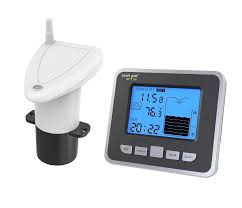Level Measurement
We offer wide range of industrial Level measurements Guided wave radar level transmitters for level measuring instruments based on the Microwave time travel principle. The transmission of microwave signals is not affected by the atmosphere, so it can meet the requirements of harsh environments such as volatile gases, high temperatures, high pressures, steam, vacuum and high dust during the process.
Non-contact Radar level meter is a level meter that measures the level of liquid or solid materials. 26 GHz high frequency radar level meter, measuring up to 80 meters.26 GHz radar level meters support customization. High temperature 230℃, high pressure 4.0MPa. It can be used for level measurement of corrosive liquids, steam, volatile liquids, and complex measurement conditions such as reactors or solid silos.
The capacitive oil level sensor is a liquid level sensor based on the capacitance measurement principle. It can be installed in various occasions to accurately measure the oil level
Magnetostrictive Level Sensor adopts the principle of magnetostriction and is an intelligent multi-parameter liquid level meter specially developed for oil storage
Hydrostatic liquid level measurement, that is, the principle that the measured static pressure of the liquid is proportional to the height of the liquid.
Split Ultrasonic level transmitter can be used for level measurement when configured with a sensor. When two sensors are configured, the level difference, sensor 1 liquid level/distance value and sensor 2 liquid level/distance value can be directly displayed. Built-in temperature compensation.
External Ultrasonic Level Meter adopts the principle of intra-acoustic echo ranging, which overcomes the impact of the tank wall on the transmission of ultrasonic signals.
Chemical level sensor with PTFE probe is suitable for open hydrostatic liquid level measurement. Mainly measuring: hydrochloric acid, sulfuric acid, nitric acid, hydrofluoric acid, sodium hydroxide, hydrogen peroxide and other highly corrosive liquids, or chemical and electroplating wastewater
Vibration Tuning fork level switches and detectors use tuning fork vibration technology to provide reliable level point detection. They provide upper and lower limit alarms and control of the material level. Suitable for liquids, powders, solid particles, etc.Tuning fork level switches are not affected by media flow, disturbance, bubbles, foam, vibration, solid particles and adhesion, and are an ideal alternative to float switches
The cryogenic level sensor is a capacitor-based Low Temperature Liquid Level Sensor. Cryogenic level sensor is a customized product for liquid level measurement in low-temperature environments such as liquid nitrogen, LNG, and liquid ammonia. Also known as liquid nitrogen level sensor.
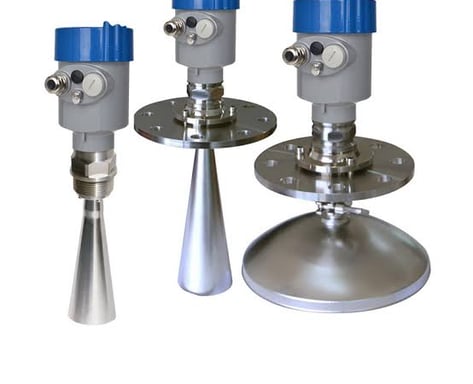

Guided Radar Level Measurement
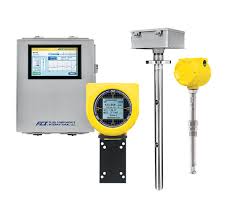

Guided wave radar is based on microwave technology. Microwaves are only affected by materials that reflect energy which means that temperature variations, dust, pressure, and viscosity do not affect accuracy.
The device sends a low energy microwave pulse down a probe. When the pulse hits the media, a significant proportion of the energy is reflected back up the probe to the device. The level is directly proportional to the time-domain reflectometry. Because a proportion of the emitted pulse will continue down the probe, an interface can also be detected.
• Adopts advanced microprocessor and unique Echo Discovery echo processing technology;
• Various process connection methods and detection component types. Suitable for various complex working conditions and applications. Such as: high temperature, high pressure and small dielectric constant media, etc.;
• Using pulse working mode, the guided wave radar level meter has extremely low transmitting power. Can be installed in various metal and non-metal containers, without harming the human body or the environment;
• Two-wire technology is an excellent alternative to differential pressure instruments, magnetostriction, radio frequency admittance, and magnetic flip instruments;
• Not affected by pressure changes, temperature changes, inert gases, vacuum, smoke, steam and other environmental influences;
• Easy to install, sturdy and durable, maintenance-free;
• HART or PROFIBUS-PA communication protocol and Fund fieldbus protocol are easy to calibrate, and on-site calibration operations can be easily realized through the digital LCD display. Simple configuration setting and programming can be realized through the software GDPF;
• Sensitive measurement and fast refresh speed;
• Suitable for high temperature working conditions, the highest temperature can be customized -200~400℃
The guided wave radar level transmitter has a wide range of applications due to its high accuracy, fast response speed, and good reliability. Common liquid level measurement application scenarios are as follows:
• Petrochemical industry: such as storage tanks, reactors, papermaking machinery, etc.;
• Food industry: such as syrup storage tanks, baking ovens, muffin tins, etc.;
• Sewage treatment industry: such as sewage tanks, sedimentation tanks, regulating tanks, reverse osmosis equipment, etc.;
• Electric power industry: such as reservoirs, large oil tanks, etc.
For Liquids, Low Dielectric Constant Liquids
• Applicable medium: liquid, especially liquid with low dielectric constant;
• Application: Measurement of liquids such as ion-free water and deoxygenated water;
• Explosion-proof certification: Exia IIC T6 Ga/ Exd IIC T6 Gb;
• Measuring range: 6m;
• Frequency: 500MHz-1.8GHz;
• Antenna: coaxial tube antenna;
• Measurement accuracy: ±5mm;
• Process temperature: -40~130℃ (standard type)/-40~250℃ (high temperature type);
• Process pressure: (-0.1~4) MPa;
• Signal output: (4~20)mA/HART;
• On-site display: four-digit LCD programmable;
• Power supply: two-wire system (DC24V)/four-wire system (DC24V/AC220V);
• Shell: aluminum single cavity/aluminum double cavity/plastic/stainless steel single cavity;
• Process connection: thread/flange (optional
.
Non Contact Radar Measurement


Non Contact radar is based on microwave technology. Microwaves are only affected by materials that reflect energy which means that temperature variations, dust, pressure, and viscosity do not affect accuracy.
Non-contact level measurement and part of the Compact Line. The product line is especially developed for hygienic applications and combines a compact design with full performance. The device ensures reliable measurement even under rapidly changing or turbulent process conditions. In addition to the proven 80 GHz technology, a 180 GHz frequency option ensures the use even in particularly small process tank she device sends a low energy microwave pulse down a probe. When the pulse hits the media, a significant proportion of the energy is reflected back up the probe to the device. The level is directly proportional to the time-domain reflectometry. Because a proportion of the emitted pulse will continue down the probe, an interface can also be detected.The device sends a low energy microwave pulse down a probe. When the pulse hits the media, a significant proportion of the energy is reflected back up the probe to the device. The level is directly proportional to the time-domain reflectometry. Because a proportion of the emitted pulse will continue down the probe, an interface can also be detected.
• Adopts advanced microprocessor and unique Echo Discovery echo processing technology;
• Various process connection methods and detection component types. Suitable for various complex working conditions and applications. Such as: high temperature, high pressure and small dielectric constant media, etc.;
• Using pulse working mode, the guided wave radar level meter has extremely low transmitting power. Can be installed in various metal and non-metal containers, without harming the human body or the environment;
• Two-wire technology is an excellent alternative to differential pressure instruments, magnetostriction, radio frequency admittance, and magnetic flip instruments;
• Not affected by pressure changes, temperature changes, inert gases, vacuum, smoke, steam and other environmental influences;
• Easy to install, sturdy and durable, maintenance-free;
• HART or PROFIBUS-PA communication protocol and Fund fieldbus protocol are easy to calibrate, and on-site calibration operations can be easily realized through the digital LCD display. Simple configuration setting and programming can be realized through the software GDPF;
• Sensitive measurement and fast refresh speed;
• Suitable for high temperature working conditions, the highest temperature can be customized -200~400℃
Non contact radar level transmitter has a wide range of applications due to its high accuracy, fast response speed, and good reliability. Common liquid level measurement application scenarios are as follows:
• Petrochemical industry: such as storage tanks, reactors, papermaking machinery, etc.;
• Food industry: such as syrup storage tanks, baking ovens, muffin tins, etc.;
• Sewage treatment industry: such as sewage tanks, sedimentation tanks, regulating tanks, reverse osmosis equipment, etc.;
• Electric power industry: such as reservoirs, large oil tanks, etc.
Benefits
Outstanding ease of use due to easy setup and operation with guided wizards
Improved process and product safety through configuration integrity - a checksum algorithm (CRC) ensures that safety relevant parameters remain unchanged
Increased productivity thanks to traceable and documented on-demand verification including the radar's accuracy without process interruption with Heartbeat Technology
Documented compliance through certified hygienic design as well as proven material conformity and traceability
Flexibility in scale - installation in tight space conditions thanks to compact sensor design and small process connections as well as use in large tanks and silos
For Liquids, Low Dielectric Constant Liquids
• Applicable medium: liquid, especially liquid with low dielectric constant;
• Application: Measurement of liquids such as ion-free water and deoxygenated water;
• Explosion-proof certification: Exia IIC T6 Ga/ Exd IIC T6 Gb;
• Measuring range: 6m;
• Frequency: 500MHz-1.8GHz;
• Antenna: coaxial tube antenna;
• Measurement accuracy: ±5mm;
• Process temperature: -40~130℃ (standard type)/-40~250℃ (high temperature type);
• Process pressure: (-0.1~4) MPa;
• Signal output: (4~20)mA/HART;
• On-site display: four-digit LCD programmable;
• Power supply: two-wire system (DC24V)/four-wire system (DC24V/AC220V);
• Shell: aluminum single cavity/aluminum double cavity/plastic/stainless steel single cavity;
• Process connection: thread/flange (optionalng Span Shelving
Hydrostatic level measurement
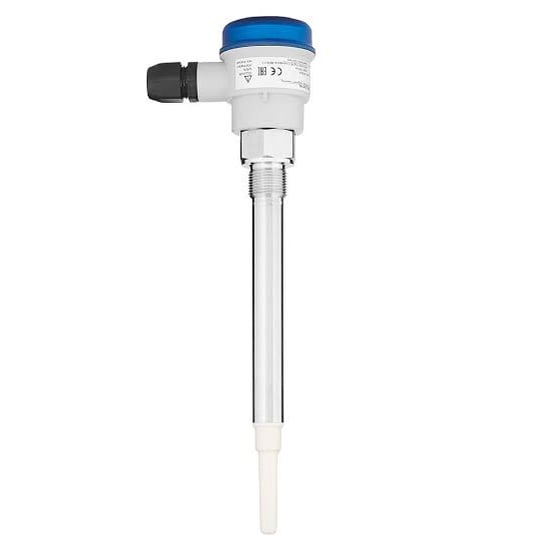

Hydrostatic level sensors measure in various applications in different industries, like food, water/wastewater. The Deltapilot and Waterpilot pressure transmitters for hydrostatic level measurement offer the right solution in tanks or wells, submersible or installed outside a vessel. Check out the broad range of hydrostatic level devices for and click on the button below.
The Contite sensor is especially developed for hydrostatic level measurement. With its protection for the sensor and cell electronics, the Contite sensor is a convincing solution in the event of severe moisture and condensate formation. The measuring element is hermetically sealed between the process membrane and measuring membrane. Hydrostatic level devices are also available with capacitive, oil-free ceramic measuring cells which are typically used in the process and environmental industries.
Hydrostatic level measurement: Measuring Principle
Contite cell: The measuring cell is absolutely protected between the process isolating diaphragm and the rear isolating membrane. Also it is absolutely insensitive to condensation and aggressive gases.
Ceramic cell: The ceramic sensor is a dry sensor, i.e. the process pressure acts directly on the robust ceramic process isolating diaphragm and deflects it. A pressure-dependent change in capacitance is measured at the electrodes of the ceramic substrate and the process isolating diaphragm.
Benefits
Maximum plant safety provided by one-of-a-kind, condensate-proof Contite measuring cell
Contite cell offers very good reproducibility and long-term stability even after temperature shocks
The ceramic cell has extremely good chemical compatibility and high mechanical stability thanks to ultra-pure 99.9% ceramic
Robust ceramic membrane with integrated membrane breakage detection - also suitable for vacuum applications
Specification
AccuracyStandard 0.2%
Optional 0.1%
Process temperature-10°C...100°C
(14°F...212°F)
Pressure measuring range100 mbar...10 bar
(1.5 psi...150 psi)
Process pressure / max. overpressure limit40 bar (600 psi)
Main wetted partsAlloy C
316L
optional coating AuPt
Max. measurement distance100m (328ft) H2O
Material process membrane316L, AlloyC
Gold-Rhodium
Measuring cell100 mbar...10 bar
(1.5 psi...150 psi)
Ultrasonic level measurement
Ultrasonic level measurement with sensors provides continuous, non-contact and maintenance-free level measurement of fluids, pastes, sludges and powdery to coarse bulk materials. The measurement is unaffected by dielectric constant, density or humidity and also unaffected by build-up due to the self-cleaning effect of the sensors. Check out the broad range of Prosonic devices for ultrasonic level measurement and click on the button below.
The ultrasonic method is a proved, as well as cost-effective solution for level measurement in liquids and bulk solids. Instruments are available as compact or separate versions. This measuring principle is characterized by easy planning and assembly, fast and safe commissioning, a long service life and reduced maintenance costs. Typical applications include abrasive and aggressive media, even in rough ambient conditions.
Ultrasonic measurement: Measuring Principle
Our meter is based on the Time-of-Flight principle. A sensor emits ultrasonic pulses, the surface of the media reflects the signal and the sensor detects it again. The Time-of-Flight of the reflected ultrasonic signal is directly proportional to the distance traveled. With the known tank geometry the level can be calculated.
Benefits
Non-contact, maintenance-free measurement
Measurement unaffected by media properties, like dc value or density
Calibration without filling or discharging
Self-cleaning effect due to vibrating sensor diaphragm
ultrasonic sensor for continuous, non-contact and maintenance-free level measurement of fluids, pastes, sludges and powdery to coarse bulk materials. But also for flow measurement in open channels and measuring weirs. The measurement is unaffected by dielectric constant, density or humidity and also unaffected by build-up due to the self-cleaning effect of sensors. Suited for explosion hazardous areas. Maximum measuring range in liquids 20m (65ft), solids 10m (33ft).
Sensor for continuous, non-contact level measurement of fluids and bulk materials in silos, on belts, stockpiles and in crushers. Also for flow measurement in open channels and at weirs. Typically used in measurements in low structural heights.
Process connection: Thread
Temperature: -40 to +95°C (-40 to +203°F)
Pressure: +0.7 to +4bar (+10 to +58psi)
Maximum measuring range: Liquids 20m (65ft), solids 10m (33ft)
Blocking distance: 0.4m (1.3ft)
International explosion protection certificates
Benefits
Integrated temperature sensor for Time-of-Flight correction. Accurate measurements are possible, even if temperature changes are present
Hermetically welded PVDF sensor for highest chemical resistance
Suited for rough ambient conditions thanks to separate installation from the transmitter
(up to 300m)
Reduced build-up formation because of the self-cleaning effect
Integrated automatic sensor detection for transmitters FMU90/FMU95 for simple commissioning
Weather resistant and flood-proof (IP 68)
Specs at a glance
Accuracy
+/- 2mm + 0.17% of measured distance
Process temperature
-40 °C ... 95 °C
(-40 °F ... 203 °F)
Process pressure / max. overpressure limit
0.7 bar ... 4 bar abs
(10 psi ... 58 psi)
Max. measurement distance
Liquids: 20 m (65 ft),
Solids: 10 m (33 ft)
Main wetted parts
PVDF (fully welded IP68 / NEMA 6P)
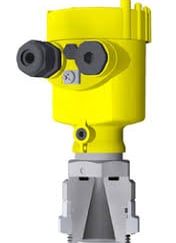

Mobile Shelving
Capacitance level measurement with a simple and cost-effective solution which offers a wealth of possibilities for level monitoring in liquids. Particularly in small tanks and build-up forming media. Point level detection works with capacitance level switches also in applications involving aggressive media and heavy build-up in liquids and solids. Check out the broad range of capacitance level sensors and click on the button below.
Capacitance level sensors are a proved, as well as cost-effective solution for level measurement and point level detection in liquids and bulk solids. Various transmitters for continuous level measurement and switches for point level detection are available. The measurement of interface is also possible. The measuring principle is proven in millions of applications.
Capacitance measurement: Measuring Principle
The principle of capacitive level measurement is based on the capacitance change of a capacitor. The probe and the tank wall form a capacitor whose capacitance is dependent on the amount of product in the tank: An empty tank has a lower, a filled tank a higher capacitance.
Benefits
Proven and tested measuring principle - robust and safe
Universally adaptable probe
Reliable operation also in strong build-up formation and viscous media
Easy commissioning
Field of application
We have developed and built for the food industry and meets all international hygiene requirements. The device also fits perfectly for industrial applications in all industries. It is intended for use in applications in liquid media without build-up. The IO-Link capability allows easy parameter setting.
For use in storage tanks, mixing vessels and pipes. For water-based liquids; Ex works for media with dielectric constant > 20, with adjustment via IO-Link for media with dielectric constant > 1.5 discernible.
Process connections: Threads
Temperature: -20 to +100°C (-4 to +212°F), CIP/SIP to 135°C (275°F) for 1 hour
Pressure: -1 to 16bar abs (-14.5 to 232psi)
Hygienic certificates
Benefits
Easy installation thanks to compact design, even in tight conditions or where access is restricted
IO-Link reduces costs and complexity due to easy configuration of the devices via engineering tools
CIP and SIP cleanability ensured - up to protection class IP 69
Individual adjustment to each medium not necessary
LED display for on-site function check
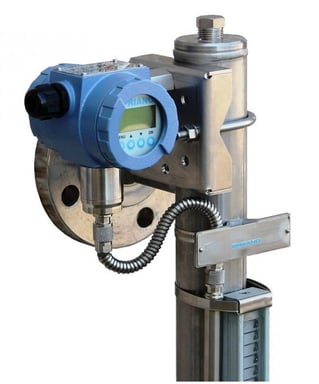

Capacitance Level Measurement
Mobile Shelving
Vibro Tuning Fork level detection
Vibro Tuning Fork point level detection offers safe overfill prevention in liquids and bulk solids in every industry. The second line of defense guarantees the highest degree of safety and availability of the switches Liquid switch stands for reliable switching unaffected by: changing media properties, turbulences, foam, vibrations or build-up. In silos containing fine-grained or powdery solids switches the perfect match. For more information click on the button below.
Vibro Tuning Fork devices perfectly fit for numerous liquid applications from simple operational point level detection (min. and max. control), certified leakage monitoring and overfill prevention through to protective equipment in plant parts subject so Safety Integrity Levels (SIL 2/3). For applications in powdery or lumpy bulk solids the vibronic devices can also be used in hazardous areas, typically in primaries, the chemical or the food industry Measuring Principle
For point level detection in liquids a sensor in form of a tuning fork is excited at its resonant frequency. The drive works piezoelectrically. The oscillating frequency changes as the fork enters the medium. The change is analyzed and translated into a switching signal.
In solids a one-rod sensor is excited at its resonant frequency. The drive works piezoelectrically. The amplitude changes as the fork enters the medium. The change is also analyzed and translated into a switching signal.
Benefits
Unaffected by media
Unaffected by media properties
Easy installation and ready for use without calibration
Self-monitoring
No wear and tear, maintenance-free
Field of application
Specifically developed for the food and beverage and life sciences industries, it compliance to all their hygienic requirements. The proven vibronic technology works reliably in all pumpable liquids, even where other measuring principles reach their limits due to changes in conductivity or dielectric constant (DC value), deposits, foam, turbulences or air bubbles. Therefore, the technology is the perfect substitute for float switches, capacitive or optical sensors.
It is used for point level detection in process and storage tanks as well as in pipelines.
Process temperature from -50 to +150 °C (-58 to +302 °F)
Viscosities up to 10,000 mm2/s (cSt)
Sensor length up to 3 m (10 ft)
Surface finish: mechanical or electropolished
International hygienic certificates (3-A, EHEDG, ASME BPE), contact material conformity with EC1935/2004, FDA, GB4806
International explosion protection certificates, overfill protection WHG, SIL
CIP/SIP
Benefits
Universal use in all pumpable liquids without media adjustment - proven vibronic measurement technology
High process and product safety through certified hygienic design (3-A, EHEDG, ASME BPE) as well as proven material conformity and traceability through declarations and certificates (e.g. EC1935/2004, FDA and cGMP)
Easy commissioning with plug & play functionality and minimized maintenance effort thanks to function test via test button or magnetic pin
Continuous diagnostics as well as traceable and documented on-demand verification without process interruption thanks to ourTechnology
Intuitive operation as well as optical process status indication via colored and bright LED

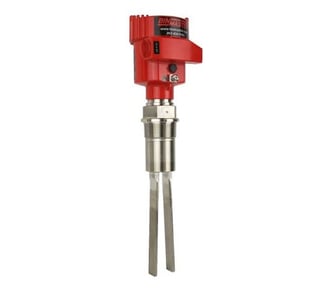
Vibro Tuning Fork level detection
Mobile Shelving
microwave barrier level measurement
In many cases where contact methods are limited, microwave barriers are the appropriate solution. Soliwave devices avoid jamming, indicate point levels, solve positioning and counting tasks, provide non-contact measurement and are thus, free of wear and tear. Typical products to be measured are wood chips, paper and carton chips, lime, pebbles, sand or even bags and complete boxes.
The microwave barrier uses a contact-free procedure for detection of point levels. It can be installed in containers, conduits, shafts or on free fall shafts. It is possible to take a measurement through non-metallic container materials from the outside. Soliwave is suitable as point level switch for controlling and counting all types of bulk solids. Emitter and receiver interact with each other.
Microwave barrier measurement: Measuring Principle
Microwave barriers are used to detect all kind of bulk solids based on microwaves (transmitter/receiver-principle). The detection of bulk solids movement (present / not present) is based on the Doppler effect of the microwaves.
Benefits
Non-invasive - tanks penetrated by microwaves from outside
Measuring principle almost unaffected by process conditions
Mechanical robust solution - maintenance free
microwave barrier uses a contact-free procedure for detection of point levels. It can be installed in containers, conduits, shafts or on free fall shafts. It is possible to take a measurement through non-metallic container materials from the outside. Suitable as point level switch for controlling and counting all types of bulk solids. It interacts with the Soliwave FDR56 receiver.
Typical bulk solids are: Wood chips, wood dust or flour; plaster, cement, ash, paper or cardboard shred, gravel, sand, dried powders in general, bags and boxes.
Process connections: Threads
Ambient temperature: -40 to +70°C (-40 to +158°F)
Measuring range: Max. 100m (328ft)
International explosion protection certificates
Benefits
Highly reliable measurement due to flush-mounted installation and possible non-contact installation as well as indication of the signal strength on the receiver
Mechanical robust solution ensures cost savings over the whole life cycle of the product: No wear and tear, process-wetted ceramic sensor diaphragm (optional), long serviceable life, maintenance free
Electronics housing can be rotated by 360°, allowing adjustment into optimum position after installation
Direct connection of the supply voltage (transmitter and receiver separately or together)
Mechanically compatible to FQR50/FDR50 microwave barrier, existing process connections can continue to be used; likewise, accessories such as adapter flanges, installation brackets and sight glasses can continue to be used
Measuring principle
Microwave barrier
Characteristic / Application
Transmitter
Non-contact point level detection and flow monitoring
Detecting, counting and positioning of objects
Monitoring of material transfer points
Detection and analysis of deposits and contamination
Installation:
Non-contact installation (transmission window) or front-flush installation (contact)
Specialities
Measurement range: max. 100 m
Supply / Communication
85 ... 253VAC
20 ... 30 VDC/ 20 ... 60 VAC
Ambient temperature
-40°C...+70°C
(-40°F...+158°F)
Process temperature
Non-contact installation: any
Within installation:
-40°C...+70°C (-40°F...+158°F)
With high temperature adapter:
up to +450°C (+842°F)
Process pressure / max. overpressure limit
Non-contact installation: any
Within installation:
0.5 bar...6.8 bar (7.2 psi...99 psi) abs.
With high pressure adapter:
up to +21 bar (+305 psi) abs.
Min. density of medium
Solid weight: > 10 g/l
Main wetted parts
Non-contact installation:
no wetted parts
Within installation:
316Ti or Aluminium;
PTFE or Ceramic
Process connection
1-1/2" R, 1-1/2" G, 1-1/2" NPT
Process connection hygienic
Non-contact installation
Certificates / Approvals
ATEX, IEC Ex, CSA C/US
Design approvals
EN10204-3.1
Options
Sight glass
High temperature adapter
High pressure adapter
Installation bracket
FAR50, FAR51, FAR52, FAR53, FAR54, FAR55
Components
Transceiver: FDR56
Application limits
Solid weight: < 10 g/l
